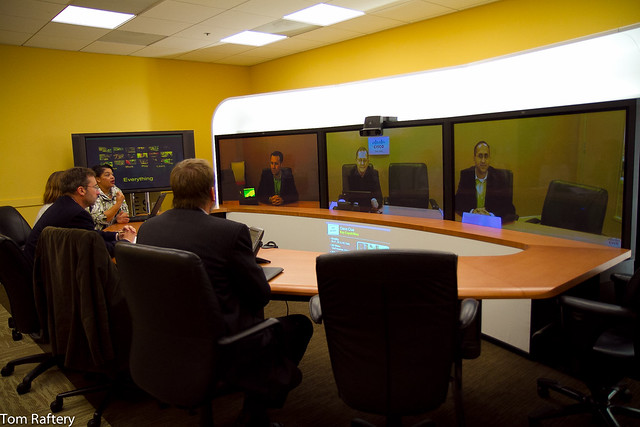As mentioned previously, I was in Santa Clara and Palo Alto last week for a couple of SAP events.
At these events SAP shared some of its carbon reduction policies and strategies.
According to SAP Chief Sustainability Officer Peter Graf, the greatest bang for buck SAP is achieving comes from the deployment of telepresence suites. With video conferencing technologies SAP is saving ?655 per ton of CO2 saved. This is hardly surprising given Cisco themselves claim to have saved $790m in travel expenditure from their telepresence deployments!
Other initiatives SAP mentioned were the installation of 650 solar panels on the roof of building 2 which provides for around 5-6% of SAP’s Palo Alto energy needs. This means that on sunny days, the SAP Palo Alto data centre can go completely off-grid. The power from the solar panels is not converted to AC at any point – instead it is fed directly into the data centre as DC – thereby avoiding the normal losses incurred in the conversion from DC->AC->DC for computer equipment. Partnerships with OSISoft and Sentilla ensure that their data centre runs at optimum efficiency.
SAP also rolled out 337 LED lighting systems. These replaced fluorescent lighting tubes and because the replacement LED lights are extremely long-life, as well as low energy, there are savings on maintenance as well as electricity consumption.
SAP has placed 16 Coulomb level two electric vehicle charging stations around the car parks in its facility. These will allow employees who purchase electric vehicles to charge their cars free of charge (no pun!) while they are at work. SAP has committed to going guarantor on leases for any employees who plan to purchase electric vehicles. We were told to watch out for a big announcement from SAP in January in the electric vehicle space!
In its entirety, SAP has invested $2.3m in energy efficiency projects at their Palo Alto campus. This will lead to $665,000 savings per annum with a payback in under four years and an annual CO2 emissions reduction of over 807 tons.
This may sound like small potatoes but SAP intends to be both an exemplar and an enabler – so they want to be able to ‘walk the walk, as well as talking the talk’.
One of the points that SAP constantly mention in briefings is that while their CO2 emissions amounted to 425,000 tons for 2009, the CO2 emissions of their customer base, associated with their running SAP software is 100 times that and the total CO2 emissions of their customer base is 100 times that again! Consequently SAP sees itself as potentially having sway over a large portion of the world’s carbon emissions. SAP hopes to be able to use this influence to help its client companies to significantly reduce their emissions – and to use its software to report on those same reductions!
Two questions I forgot to ask SAP on the day were:
- if they were getting any rebates from their utility (PG&E) for energy reductions? and
- if the car charging stations were being run from the solar panels (and if so, were they also running DC-DC directly)?





